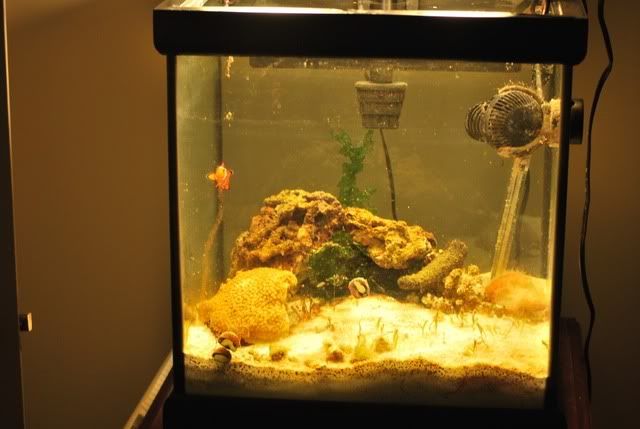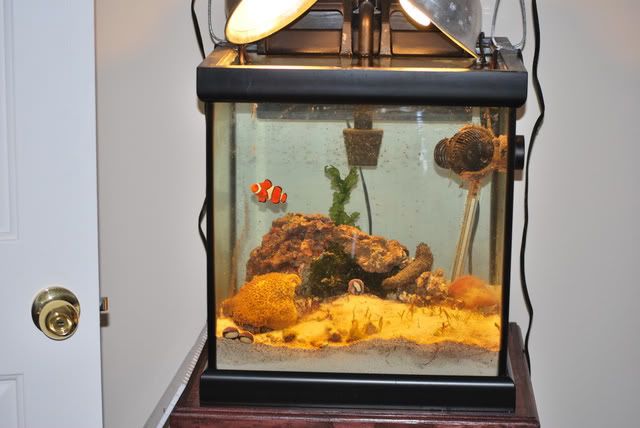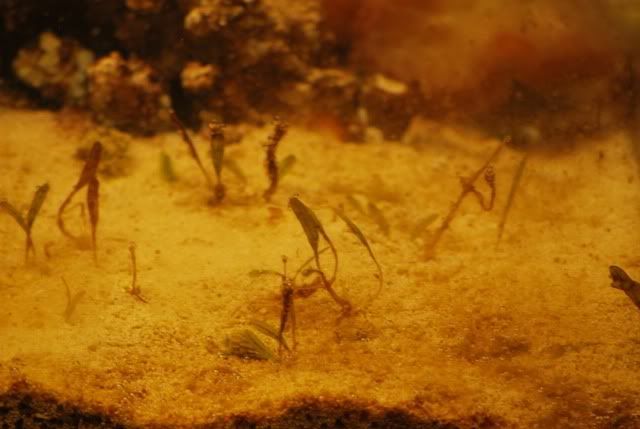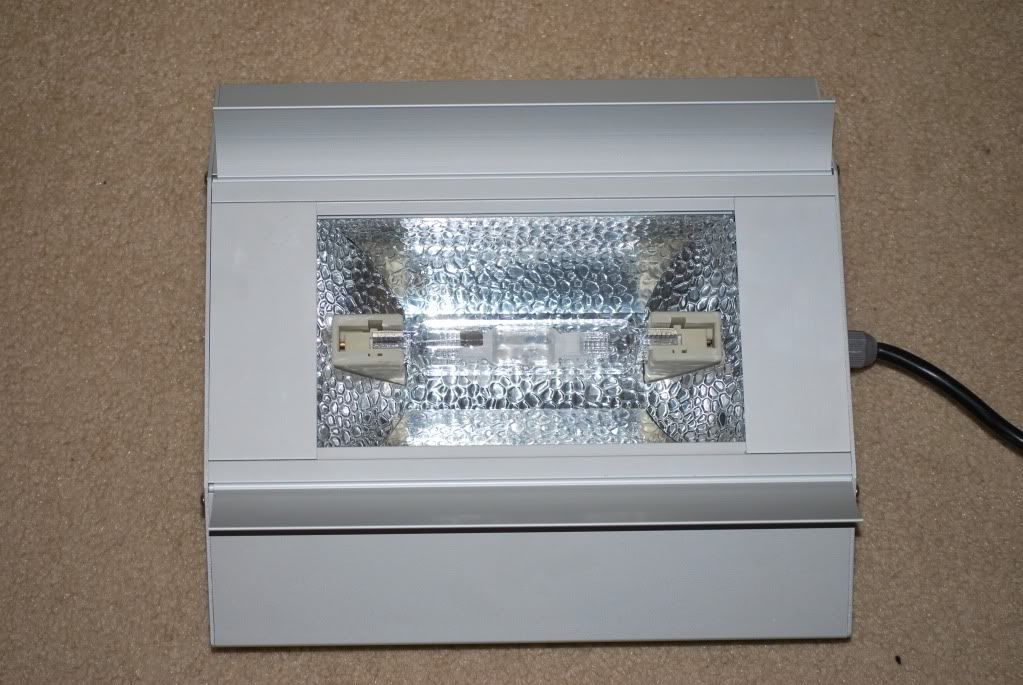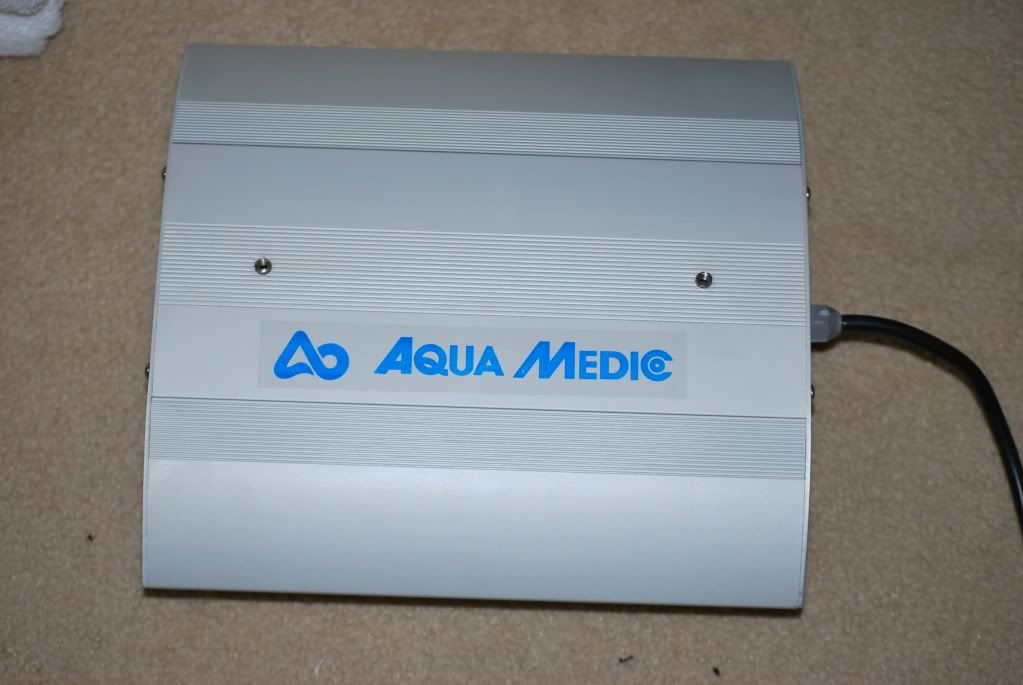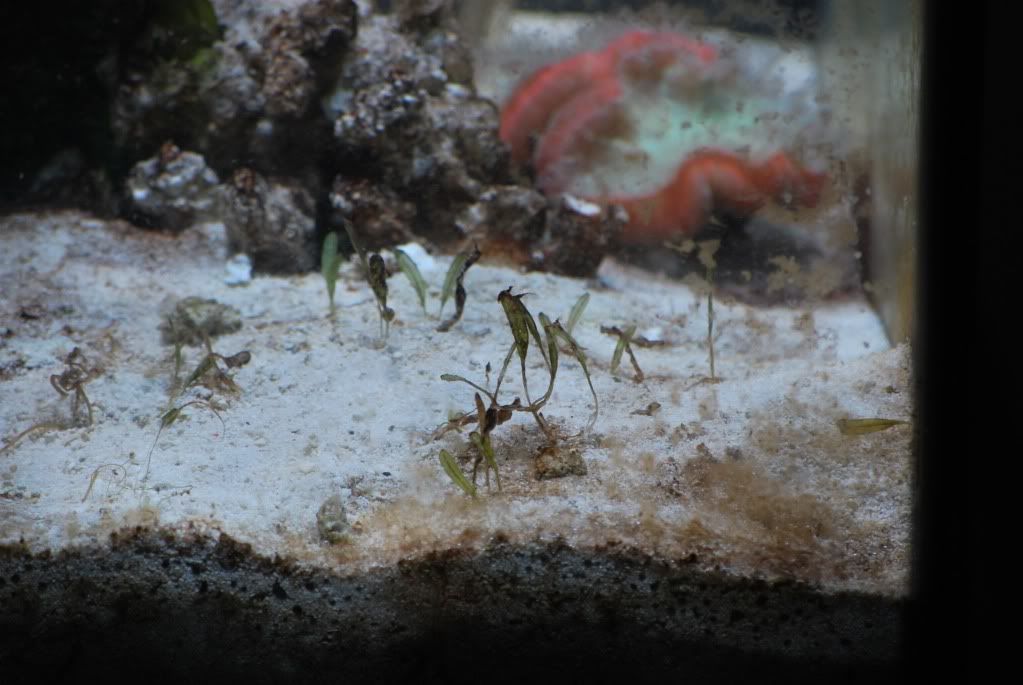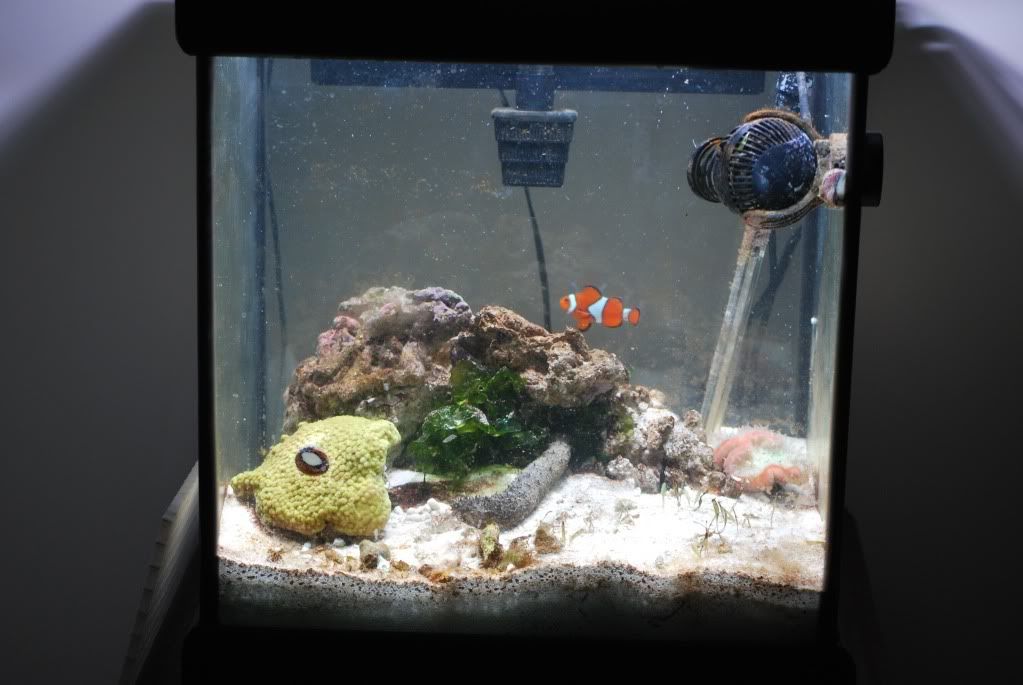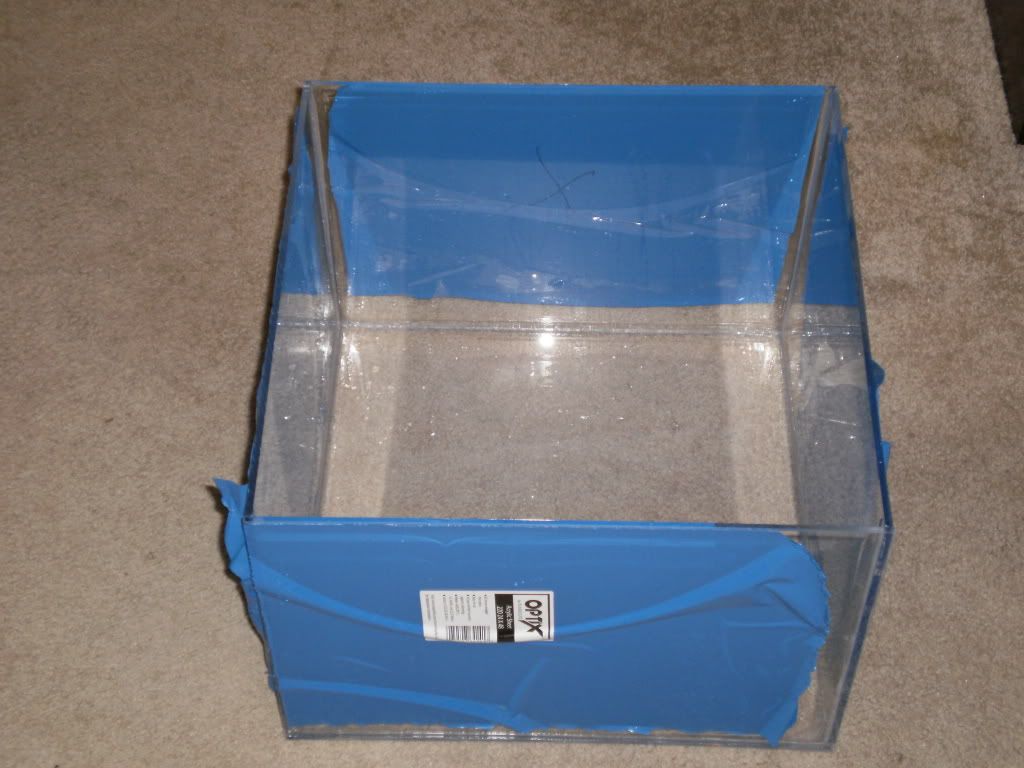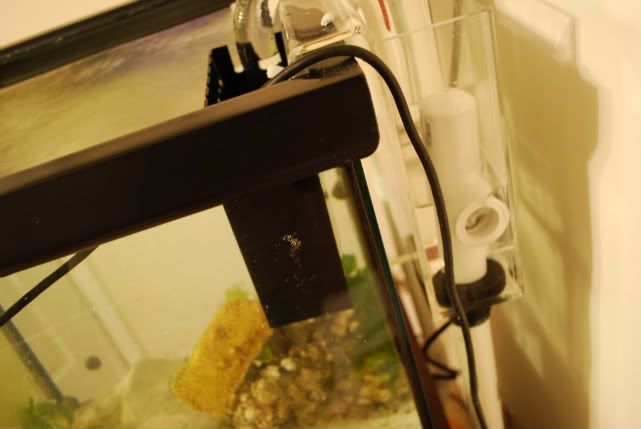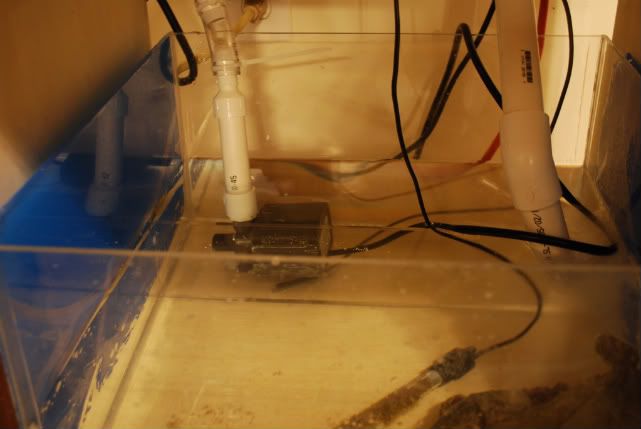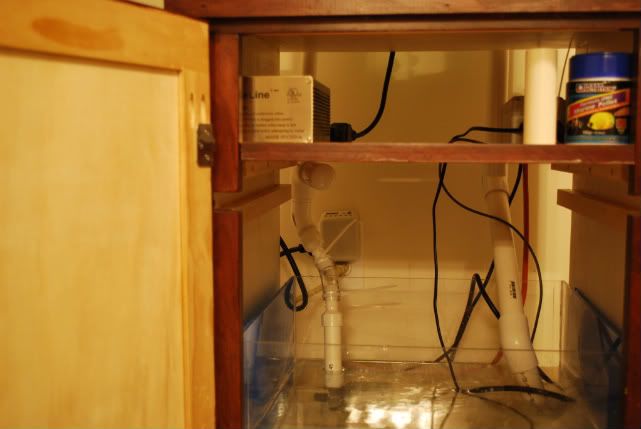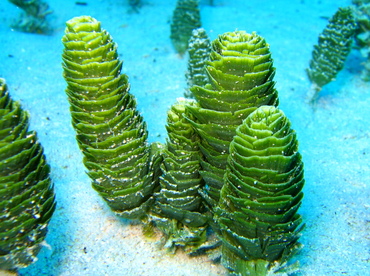--25g cube, glass (18x18x18 in.) w/ HOB overflow (tempered glass, so no drilling)
--15g acrylic DIY acrylic sump (17x17x12)
--250w HQI pendant with XM 10000K lamp--MH only
--Mag 7 return (most of which will go to the scrubber)
--Modded Tunze Nanostream 6025 x1: will give me ~70x turnover with return
--Spectrapure UPLC auto top-off module with 100% kalkwasser as top-off
--Ranco temp controller
-- ~10 lbs of live rock, some of which will be in the sump to maximize sand area
--3 inches of live sand w/mud mixed in
--Algal turf scrubber--I'm going to hold off on it initially, since I want to give the seagrass a chance to grow-in. A scrubber can easily outcompete the grass if I let it. I'm also considering simply cutting down the scrubber photoperiod, which may be a better option. I had lots of success with one on my 40, so I'll continue using one.
That's it as far as the tank setup itself goes. Beyond what I listed, I'll just be using a bit of carbon running continuously in a passive manner.
The goal for this tank is to make it as simple as possible, with minimal maintenance and minimal equipment. The most I suspect this tank will demand is a good amount of food input to keep enough nutrients for the seagrass to grow properly. Well, that and weekly scrubber cleanings, which are fairly quick. I would also eventually have to start pruning the seagrass. So, basically all-natural filtration, occasional water changes, heavy feeding, and heavy plant/algal growth are the primary themes here.
However, I'm also planning on an anemone--likely one of the sand-dwelling, hosting species. Most of these do get pretty darn large, but it would have the entire tank at its disposal. Plus, I can also control the size to one degree or another with feeding frequency--all, of course, without any harm to the animal. The seagrass bed would be a very natural setting for these particular anemones, too.
So, for now, that's it. A natural tank that is as sturdy as I can make it in regards to water quality. Again, the only real challenge is the food input, which will have to be maintained at a fairly heavy pace, otherwise (oddly enough) pest algae and stunted plants will set in. It should also promote an ideal habitat for a dense population of other macro- and microorganisms, which should help in making this as natural and stable as possible. At any rate, I'm looking forward to it and sharing the experience, since this kind of tank isn't terribly common and as it goes against many of the common themes you'll often hear in regard to aquariums.
Pictures to come as I piece things together
